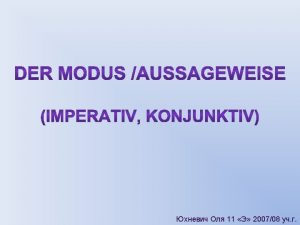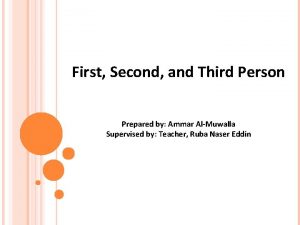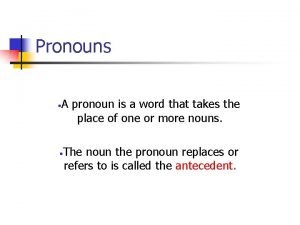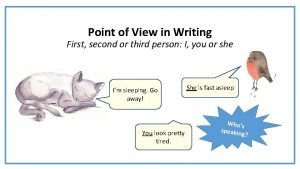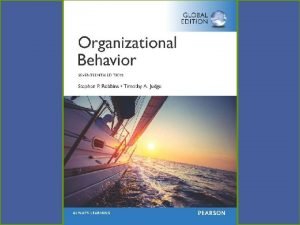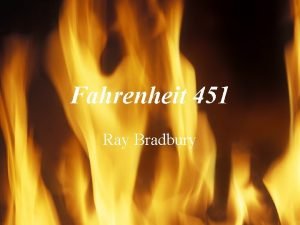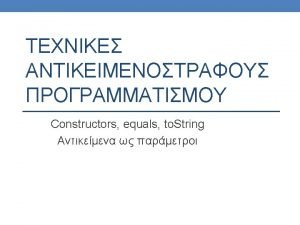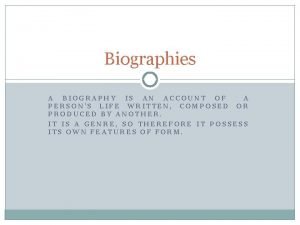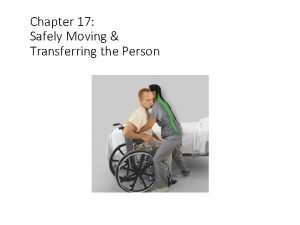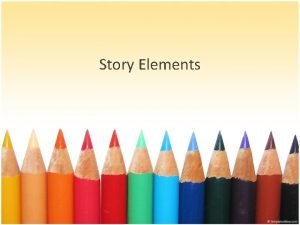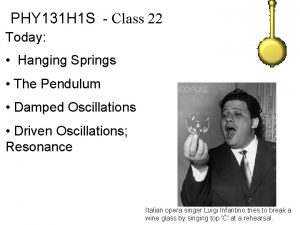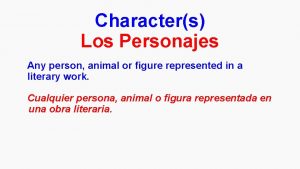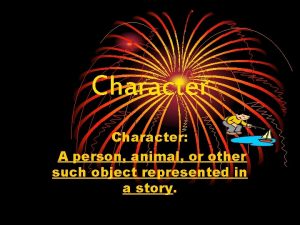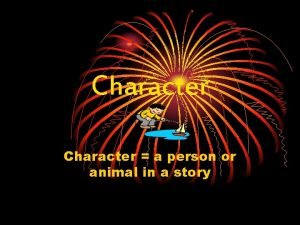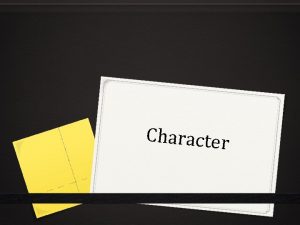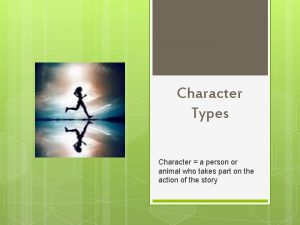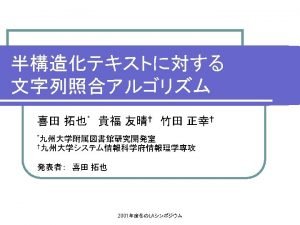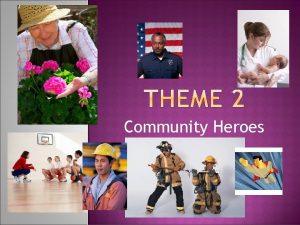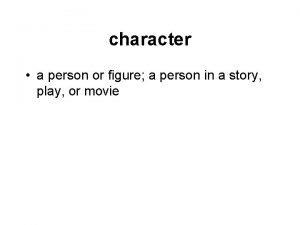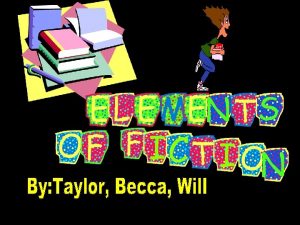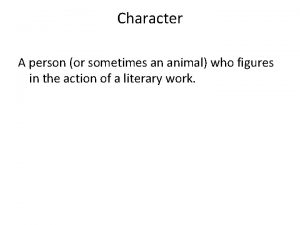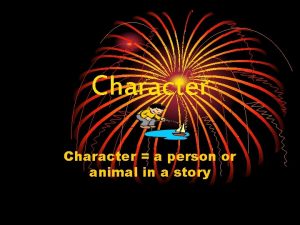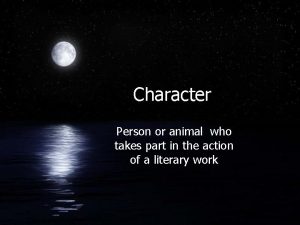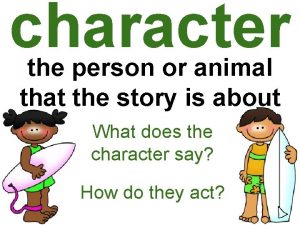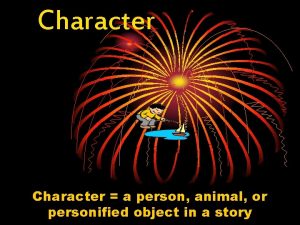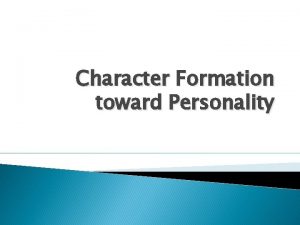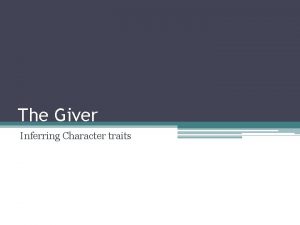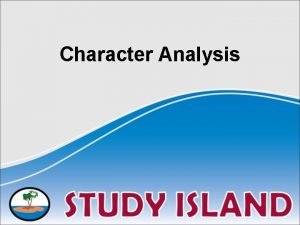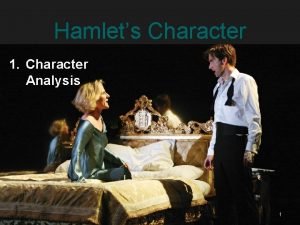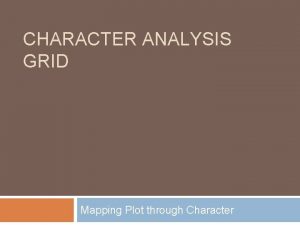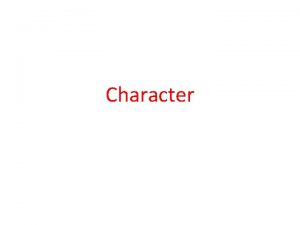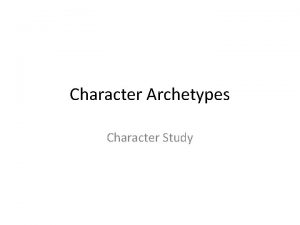CHARACTER Character a person or animal in a






















- Slides: 22

CHARACTER Character = a person or animal in a story

Characters • Characters are the actors in a story’s plot. They can be people, animals, or whatever the writer chooses. The protagonist is the main character. Often referred to as the HERO! The antagonist is the person in conflict with the main character. Often referred to as the VILLAIN!

Characters in “Cinderella” • The main characters are Cinderella, the stepsisters, their mother, the fairy godmother, and the prince. • Protagonist: Cinderella (hero) • Antagonist: the stepsisters, their mother (villains)

The protagonist is usually… • The central character • A character the reader can identify with • Has a rounded personality • (we hear what they say, what others say about them, we know what they think and how they feel) • A character with a dynamic personality

BUT Not All Protagonists are Heroes! • The protagonist is the central character of a story. • The protagonist can be male or female, and is written as being "good" most of the time, but in some instances can be "bad. " • The plot of the story is often written in the protagonist's point of view. Megamind = Protagonist but also conisidered the Villain!

Antagonist • The character that causes or leads the conflict against the protagonist is called the antagonist. • The antagonist is not always human, but can be a group or force as well. • (i. e. tornado, aliens, or a swarm of insects) • The antagonist is the mirror of the protagonist. • Whatever the protagonist does that is good, the antagonist will work to counteract. • Usually the antagonist attempts to disguise him/her/itself.

More types of Characters… • Major Minor

Major Character The major (main) character in a story is like the star of a movie and is central to the action that takes place.

Minor character… A minor character is one who takes part in the action but is not the focus of attention.

Round / Flat Characters • Let's begin by thinking about round and flat like a painting or drawing. Flat • If you're an artist, you must decide how much detail to put into a painting. • Do you want many lines and many colors, or just an outline and only black and white? • As an author, you must decide how much detail to include about each character. • Which characters are most important; how will giving detail, or not giving detail, affect the story? Round

Round (like 3 D) • Characters that are described in-depth, with many details, are well-rounded characters. • They can be thought of as 3 D. • The main character in a story is almost always round (but there are exceptions).

Round Character A round character is a complex, fully developed character. • If you're reading a story and you feel like you know a character extremely well, then most likely the character is round.

Flat Character A flat character is a one-dimensional character, typically not central to the story Characters that are not described well, that you're not given much information about, are flat characters.

Flat (like 2 D) • Consider a drawing: • a three dimensional drawing gives more detail than a two-dimensional drawing. • If you draw a flat picture of a house, for example, you can only see one side of it. • You cannot see three of the four sides. • This is how a flat character is; you can only see a few characteristics of the character. • There are many things you cannot "see", or many details you are not given by the author.

Round? Flat? How do I really know? • As a reader, judge whether or not the character is round or flat by trying to write down characteristics of the character. • Answer the question: • What do you know about the character? • If your list is long, with many characteristics, then the character is round. • If your list is short, or there's not many characteristics at all, then the character is flat. d n u o R T A L F

Static / Dynamic • The key word when dealing with the difference between static and dynamic characters is "change. " • The type of change, though, is specific. • We are only concerned with internal changes; changes which occur within the character. • These would include a major change in their personality, or a change in their outlook on life. Static

Static / Dynamic • Another important change that a character may undergo is a change in values, or it could be an overall change in the nature of the character. • Do not focus on changes that happen TO a character, but rather, changes that happen WITHIN a character. • Think about it this way: • Does the event affect the character by changing the character internally?

Static • In order for a character to be considered a static character, the character must remain basically the same throughout the entire story. • Like the static on your tv. • The character does not undergo any internal changes. • Think of static characterization like plastic surgery. • The character may change in looks, but unless their personality is affected, the character is static.

Dynamic • A dynamic character is a character that undergoes an internal change sometime between the beginning and end of the story. • The change in the character is usually crucial to the story itself. • Say a main character goes through a life-altering experience… • …such as a race car driver getting into an accident. • If the driver's personality changes and he is no longer willing to take on the risk of driving a race car, the character would be dynamic.

Static / Dynamic • In order to distinguish static characters from dynamic characters, write down a description of the inner character at the beginning of the story, in other words, what do you initially learn about the character's personality? • Answer these three questions: • How does the character feel about his/her/itself? • How does the character act towards others? • What is the characters goal? • Do the same thing and answer the same questions at the end of the story. • Usually, if you're dealing with a dynamic character, you will be able to notice a difference between your personality descriptions as well as between the answers to the three questions. • If there is no major difference, the character is static.


Character Motivation A motive is a reason that explains or partially explains a character’s thoughts, feelings, actions, or speech. If the motives of a main character are not clear, then the character will not be believable. Characters are often motivated by needs, such as food and shelter. They are also motivated by feelings, such as fear, love, and pride. Motives may be obvious or hidden.
 2. person plural
2. person plural Example of second person point of view
Example of second person point of view Person person = new person()
Person person = new person() Is the word that a pronoun
Is the word that a pronoun Formal and informal writing examples
Formal and informal writing examples First person vs third person writing
First person vs third person writing Person-job fit and person-organization fit
Person-job fit and person-organization fit Person vs person conflict in fahrenheit 451
Person vs person conflict in fahrenheit 451 Private string
Private string Chapter 18 safely moving the person
Chapter 18 safely moving the person Account
Account One persons trash is another persons treasure
One persons trash is another persons treasure When transferring a person
When transferring a person Excerpt from the car by gary paulsen answer key
Excerpt from the car by gary paulsen answer key Person a and person b
Person a and person b A person swings on a swing when the person sits still
A person swings on a swing when the person sits still Hi hi how are you doing
Hi hi how are you doing Person place thing idea examples
Person place thing idea examples Personaje redondo
Personaje redondo Person or animal in a story
Person or animal in a story Person or animal in a story
Person or animal in a story Subject verb agreement with prepositional phrases
Subject verb agreement with prepositional phrases Venn diagram of organelles in plant and animal cells
Venn diagram of organelles in plant and animal cells
